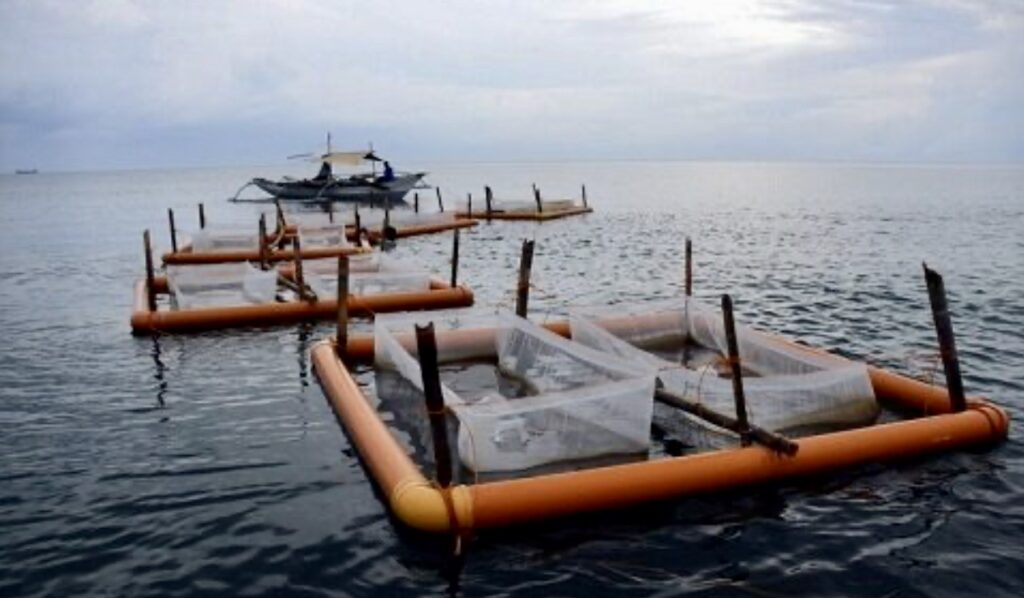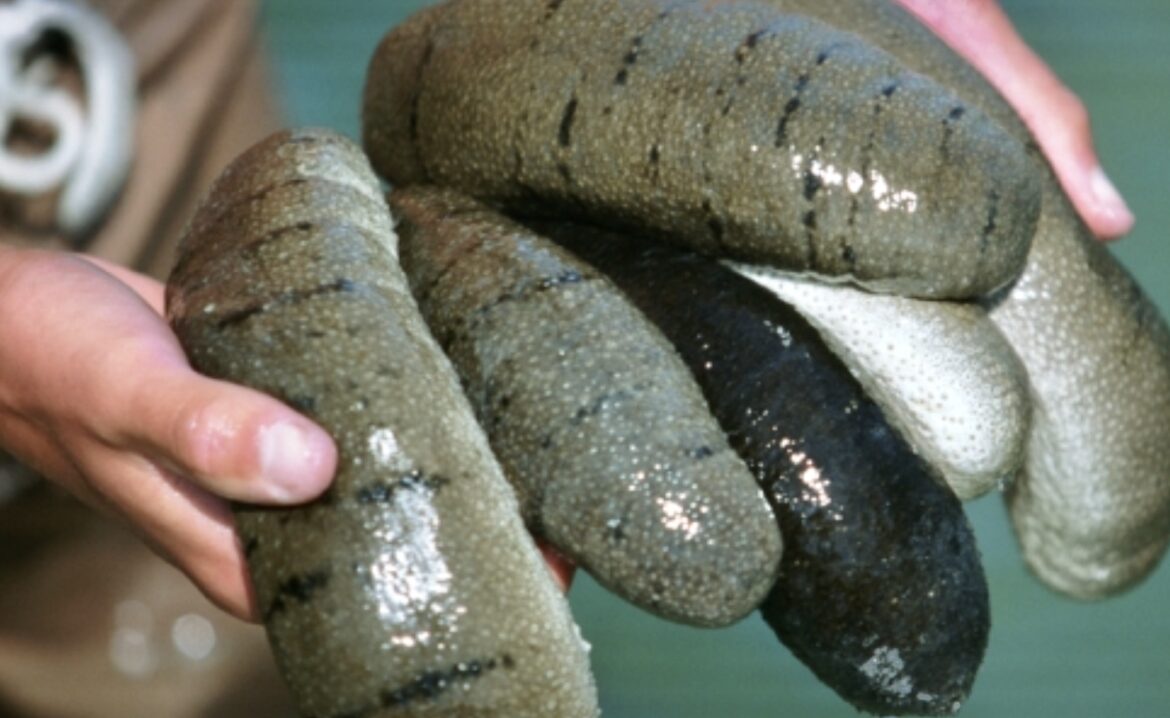By Henrylito D. Tacio
Photos courtesy of BFAR
Sea cucumbers – named because they looked like the vegetable crop cucumbers – are among the most commercially-exploited aquatic species in the country for their reported medical, pharmaceutical, gastronomical and commercial use. Most people thought they would join the endangered list, but recent developments showed sea cucumbers could be raised commercially.
As early as 2014, the Bureau of Fisheries and Aquatic Resources (BFAR) – a line agency of the Department of Agriculture – reported that it was able to produce high-value species of sea cucumbers in commercial quantity after years of experimenting.
The BFAR was culturing the Holothuria scabra species in hatcheries. “Now we are able to produce for commercial (production),” Dr. Westley Rosario, lead scientist for BFAR’s aquaculture station in the province of Dagupan, told Philippine Star. “The size is good because we have attained the three-grammer size and we are more confident in raising it in different stages. So technically we are ready…”
The Philippines is home to about 200 sea cucumber species, 40 of which have economic importance. They used to abound in the country’s coastal waters. Anecdotal accounts from the 18th century hold that the daily harvest could be measured in sacks.
“Commercial exploitation of sea cucumbers in the Philippines dates back to the late eighteenth century,” pointed out Poh-Sze Choo of The WorldFish Center. “Almost all the sea cucumbers harvested are processed into the dried form and exported predominantly.
“There are no restrictions on the export of any species of sea cucumbers even though some species have reached endangered status, nor is there a size restriction on any sea cucumber species for export,” wrote Choo in his paper, “The Philippines: A hotspot of sea cucumber fisheries in Asia.”
From being the world’s top producer, it slid to third place in the world as a sea cucumber producer. “Sea cucumber fisheries have been heavily depleted due to unregulated fishing activities and habitat destruction. In addition, these fisheries have shifted from low volume, high value fishing to high volume, low value production,” said Preciosa Samonte of the Philippine Council for Agriculture, Aquatic and Natural Resources Research and Development (PCAARRD).
Due to the gravity of the current scenario, the government launched the Philippines Sea Cucumber Research and Development Program, which aims to restore sea cucumber fisheries and bring back a viable economic activity.
“The strategic goal is to establish a sustainable and globally competitive sea cucumber industry, which will provide equitable economic benefits to various stakeholders, and maintain the productivity and biodiversity of sea cucumber fisheries in the Philippines,” Samonte wrote.
The program identified a three-pronged approach (focusing on production, post-harvest processing, and trade and marketing) as the key to attaining its goal. Among the initiatives being conducted are on production and post-harvest processing.

So far, studies show that the best method is still to manage the natural stocks in their natural environments. The passage of Fisheries Administrative Circular No. 248 Series of 2013 has set size limits of 320 grams for harvesting and processing.
“Together with the Philippine National Standards for dried sea cucumbers set by the Bureau of Agriculture and Fisheries Product Standards,” Samonte wrote, “these provide the essential enabling policies to help improve the production of premium grade-size sea cucumbers to abate further depletion of natural stocks.”
To increase production, the management of natural stocks is imperative. “To help increase production of premium grade, high-value sea cucumbers, the development of a culture-based industry is also being initiated,” Samonte reported.
Currently, the only sandfish is cultured in hatcheries. “Hatchery production of sandfish juveniles and wild stock production are both crucial to address the current dismal scenario of sea cucumber fisheries,” Samonte wrote. “With the available juveniles, depleted areas have been restocked, sea ranching activities have been conducted, and, possibly, sea cucumbers with other high-value fishery resources can be co-cultured.”
Marlon Alejandro, in a paper published by the Southeast Asian Fisheries Development Center, reported that raising sea cucumbers in hatcheries or seaborne pens is viable. “Once (juveniles of) sea cucumbers are placed in the seafloor or in ponds, the survival rate could be almost 100%,” he wrote.
A study conducted at the BFAR showed that it takes six months for the sea cucumber to reach 250 grams, the desired weight in the export market. One hectare of fishpond can accommodate 30,000 sea cucumbers. This means that after six months, a farmer can harvest at least 2.5 tons.
But before they can be exported, they have to be dried first – shrunk to about 10 % of their live weight. So, the marketable harvest would only be 250 kilograms. At P4,000 per kilogram, a farmer earns a whopping P1-million from his one-hectare pond in six months.
Given this recent development, there could be a significantly brighter future for sea cucumbers in the Philippines.
Across Asia, sea cucumbers have long been a staple in peoples’ diets, mainly in soups, stews, and stir-fries. They are highly nutritious – described as “an ideal tonic food” – as they provide more protein and less fat than most foods. “Like tofu, it is flavorless but absorbs the flavors of its surrounding seasonings and foods,” wrote a food maven and epicure.
Generally, sea cucumbers are sold as trepang, which is easier to store and handle than fresh products. They are valued as an exotic delicacy and a flavorful condiment for soups, noodles, and other dishes.
Like their terrestrial cousins, sea cucumbers can – unsurprisingly, perhaps – also be pickled. In some instances, they are prepared as salads and eaten fresh, minus the internal organs.
To some people, sea cucumbers are more than just food. In fact, there are people who believe sea animals possess some aphrodisiac powers. The reason for this belief is the peculiar reaction of the creature on being kneaded or disturbed slightly with fingers. It swells and stiffens, and a jet of water is released from one end. This behavior is similar to the erection and subsequent ejaculation of the male sexual organ.
In the Philippines, sea cucumbers are found in burrows, seagrass beds or sandy areas with large amounts of coral nibbles. Some are found in waters of up to 20 meters deep. These can be found off the coastal waters of Zamboanga City; Zamboanga del Sur; Zamboanga del Norte; Basilan Province; Jolo, Sulu; South Cotabato; Surigao del Norte; Villareal and Catbalogan, Samar; Negros Occidental; Cebu; Calatagan, Bangas; Polilio Island, Quezon; Masinloc, Zambales; San Vicente, Cagayan; San Fernando, La Union; Bolinao, Bani and Alaminos, Pangasinan.
For almost a century, the harvesting and processing of sea cucumbers have been sources of income for many Filipino families. Today, sea cucumber is still a multi-million-dollar industry.
“There is a big export market for sea cucumbers particularly for Hong Kong, China, Korea and Japan,” says Dr. Rafael D. Guerrero III, former executive director of the Laguna-based Philippine Council for Aquatic and Marine Research and Development and is now an academician at the National Academy of Science and Technology.
Aside from food, there’s also an emerging market for the use of sea cucumbers in the pharmaceutical and cosmetic industries. Common medicinal uses of sea cucumber in China include treating: weakness, impotence, debility of the aged, constipation due to intestinal dryness, and frequent urination.

